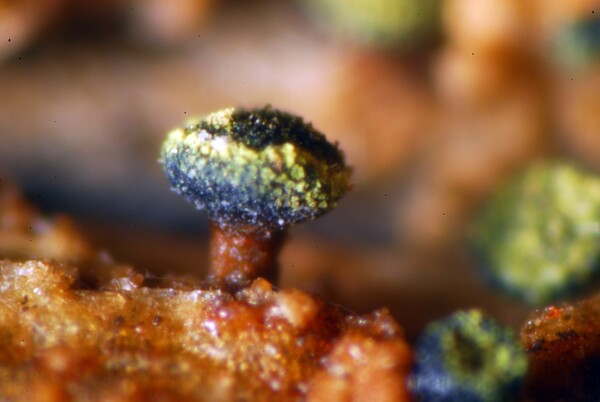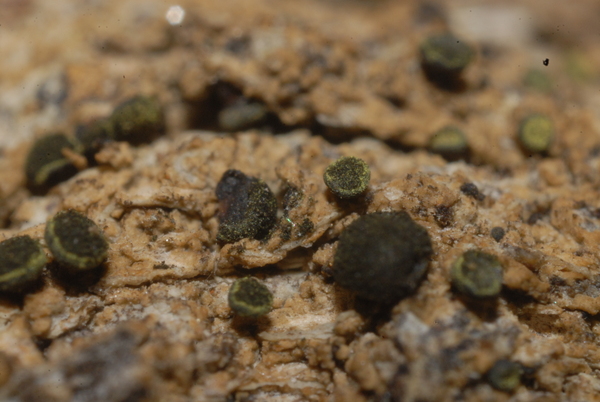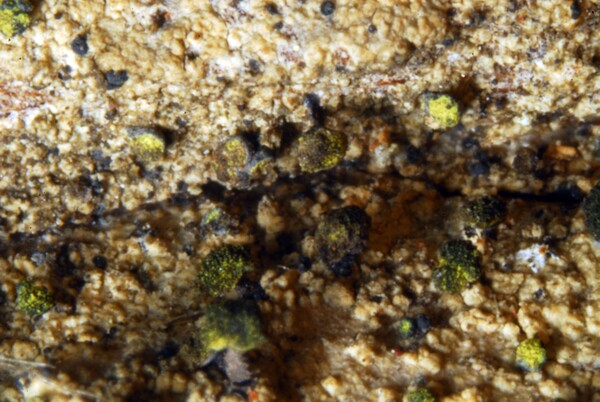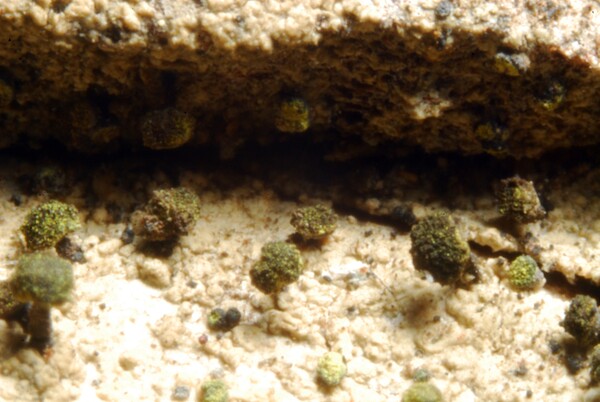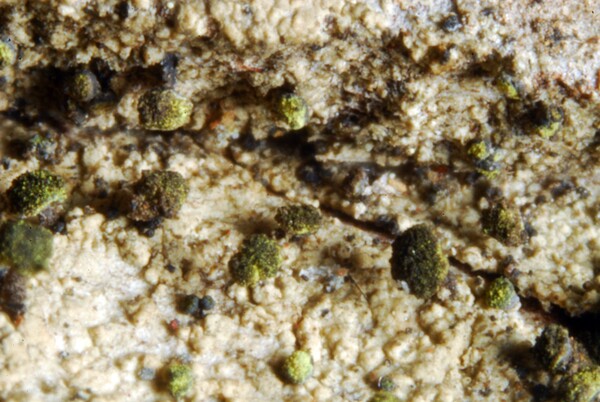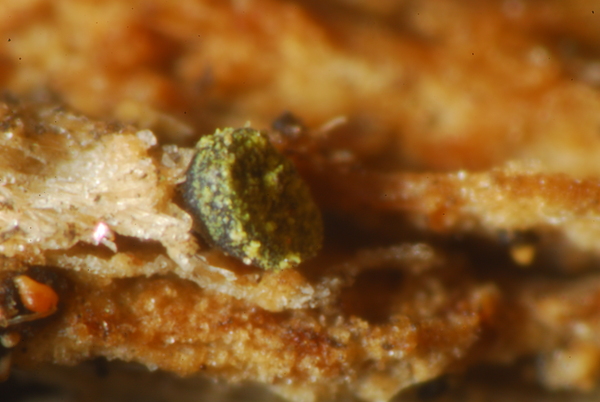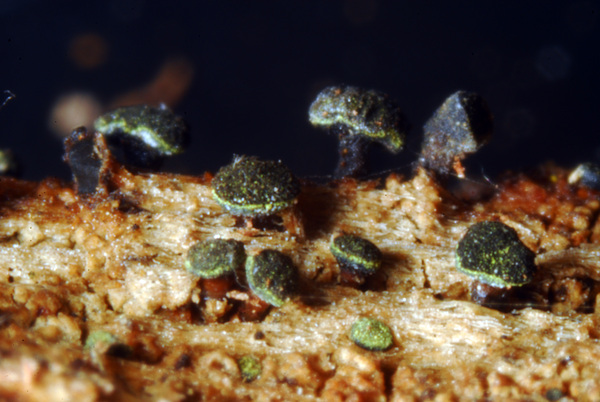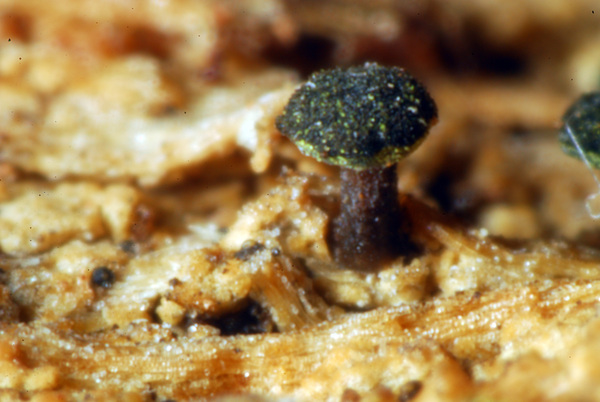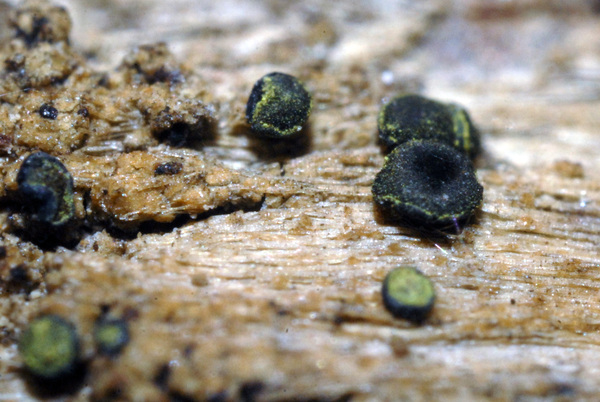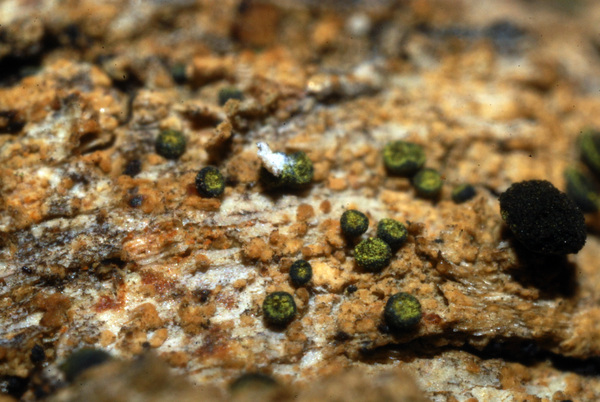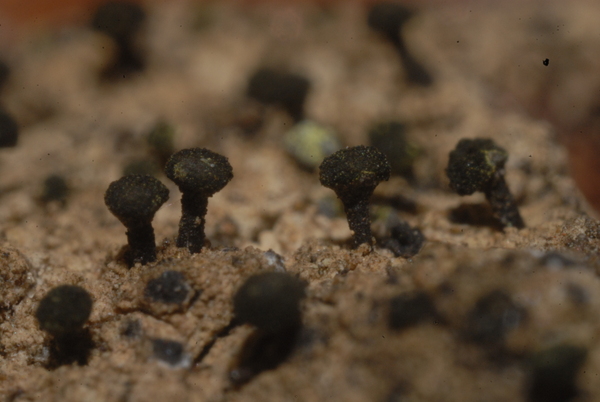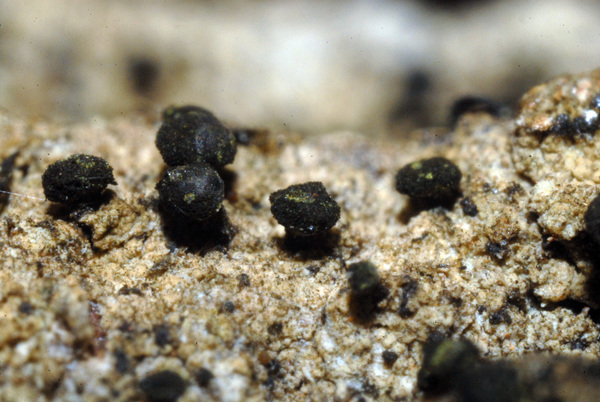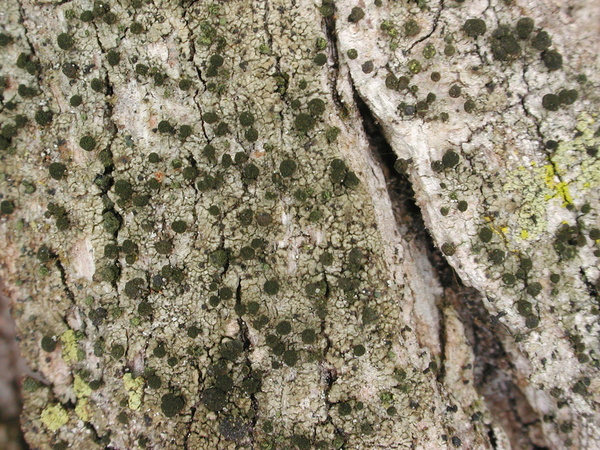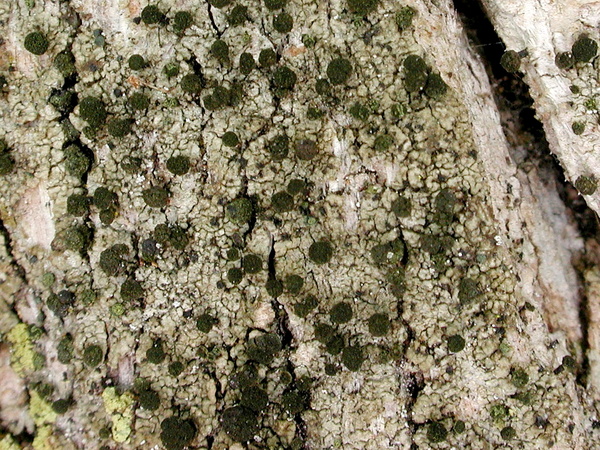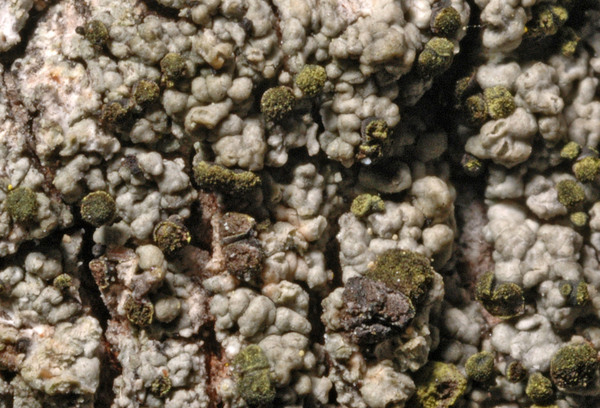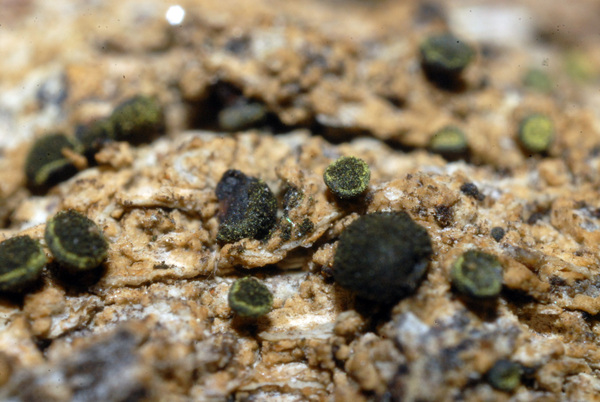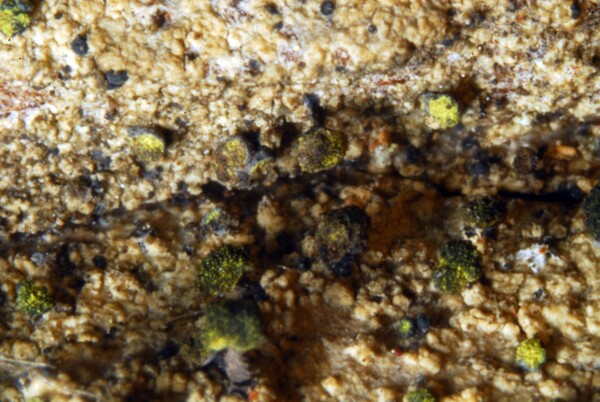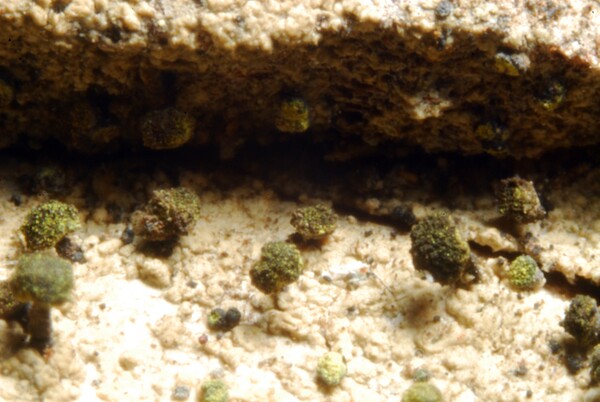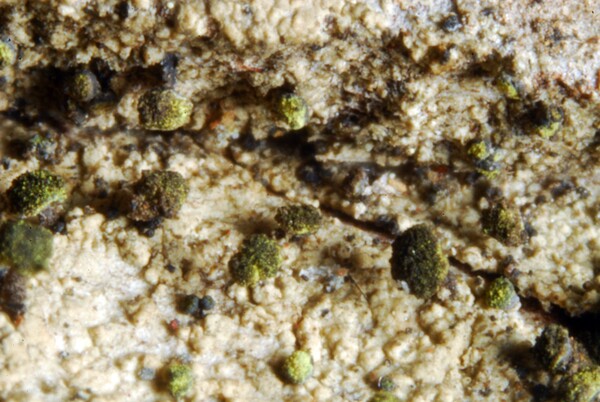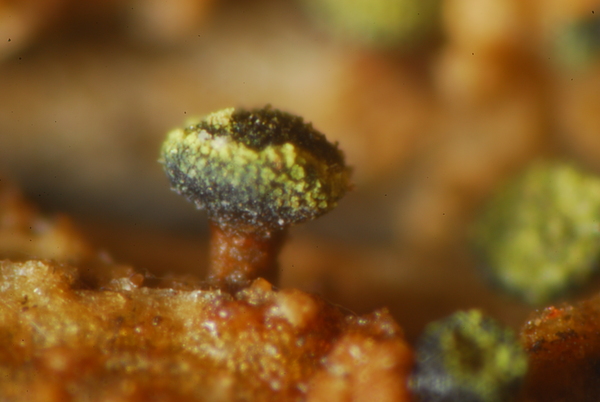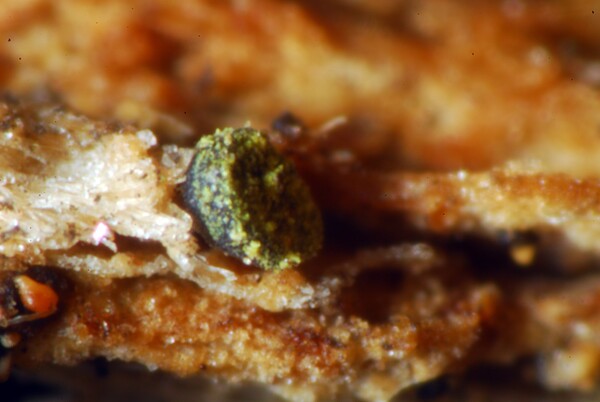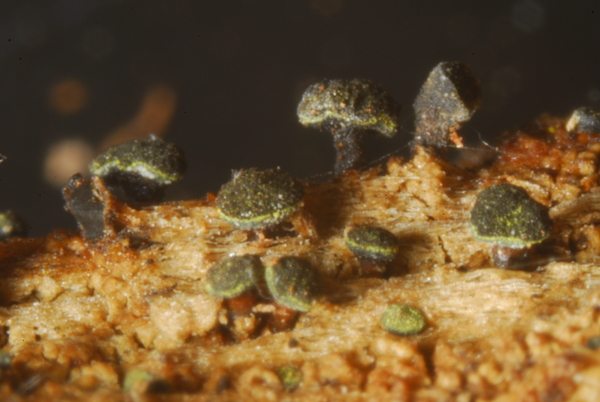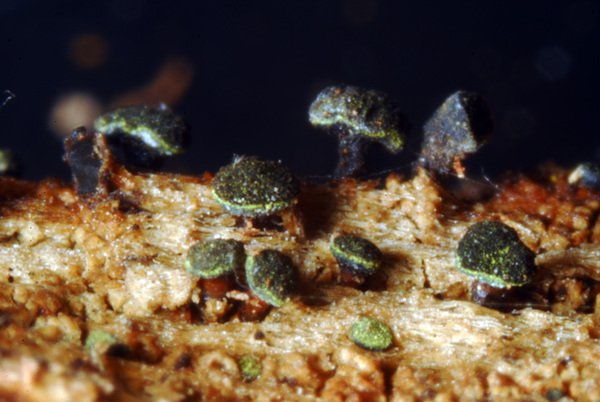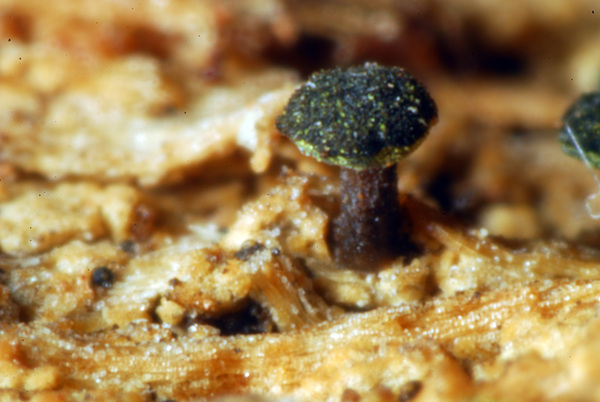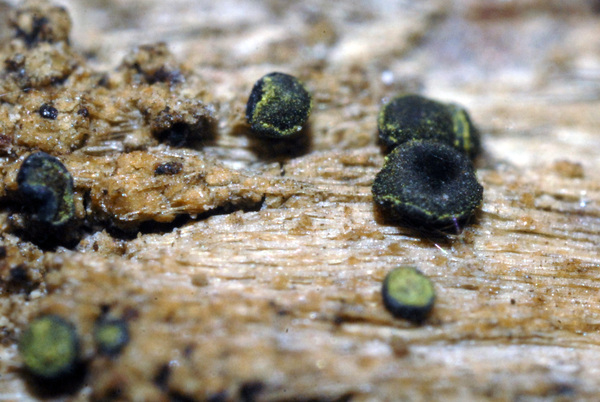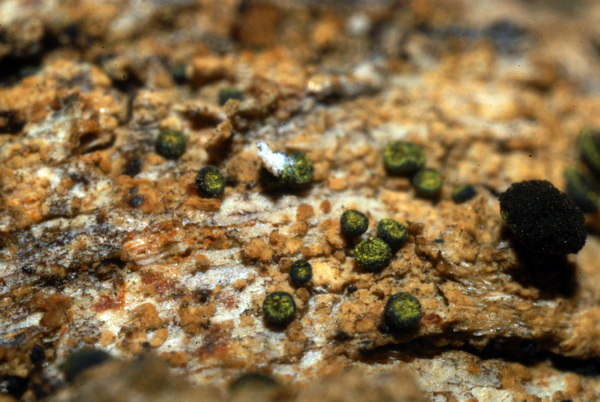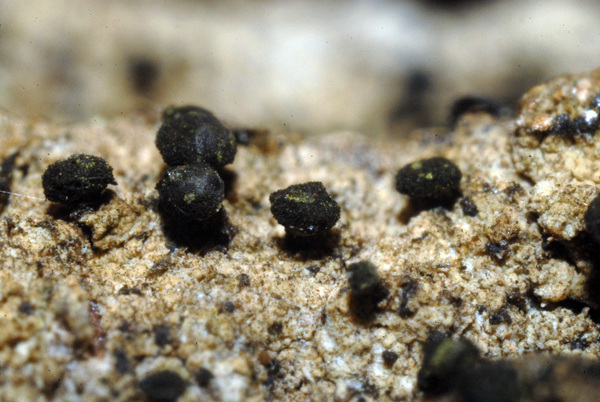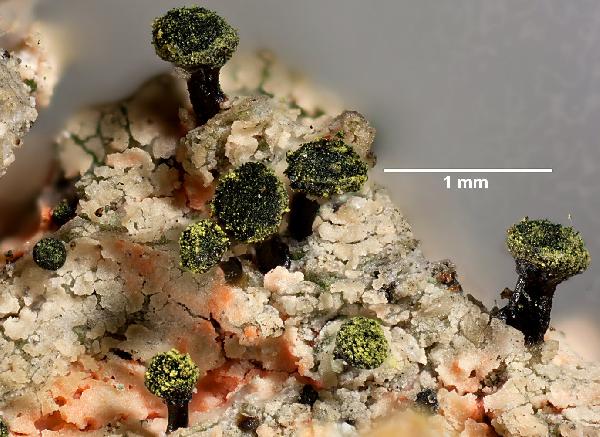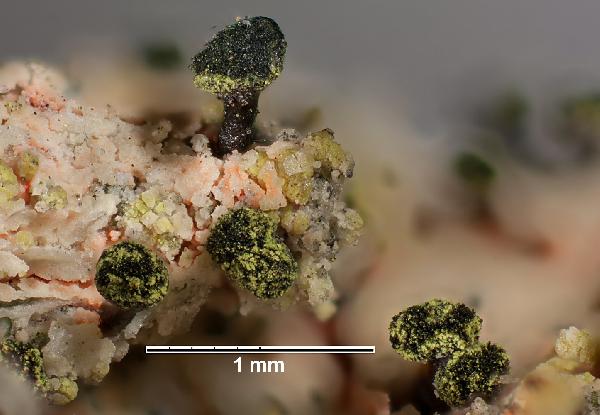Calicium adspersum Pers.
Icon. Descript. Fungor. Minus Cognit., 2: 59, 1800.
Synonyms: Calicium diploellum Nyl.; Calicium lenticulare sensu Nádv.; Calicium mutabile Ach.; Calicium roscidum (Ach.) Ach.
Distribution: N - Lomb (Puntillo & Puntillo 2009), Piem (Puntillo & Puntillo 2009), Emil (Nascimbene & al. 2021). C - Tosc (Puntillo & Puntillo 2009), Marc (Puntillo & Puntillo 2009), Umb (Genovesi & al. 2001, Ravera & al. 2006, Puntillo & Puntillo 2009, Laz (Puntillo & Puntillo 2009), Mol (Caporale & al. 2008, Brackel 2020), Sar (Puntillo & Puntillo 2009, Zedda & Sipman 2001). S - Camp (Aprile & al. 2003b, Puntillo & Puntillo 2009, Garofalo & al. 2010), Pugl (Tretiach 1993, Puntillo & Puntillo 2009), Bas (Potenza 2006, Puntillo & Puntillo 2009, Potenza & Fascetti 2012), Cal (Tretiach 1993, Puntillo 1994, 1996, Puntillo & Puntillo 2009), Si (Tretiach 1993).
Description: Thallus crustose, episubstratic, verruculose to granular, grey. Apothecia stalked and pin-like to subsessile, black with a bright yellow pruina on the edge of the capitulum and on the mazaedium, especially in young apothecia. Stalk black, (0.2-)0.6-1(-1.4) mm high, (0.1-)0.2-0.3 mm thick, of weakly sclerotized, pale greenish to brown, irregularly interwoven hyphae, the outer layer paler and covered with a thin, transparent, weakly amyloid gelatinous sheath. Capitulum (0.3-)0.5-0.8 mm across, broadly lenticular, with a well-developed, cup-shaped exciple formed by strongly sclerotized and interwoven hyphae; mazaedium well developed, black; hypothecium dark brown, with a flat to convex upper surface, consisting of largely periclinally arranged hyphae. Asci clavate, formed singly, dissolving early, with 2-3-seriately arranged ascospores. Ascospores 1-septate, dark brown, ellipsoid, 13-17 x 5.5-7(-8) µm, thick-walled, with a distinct ornamentation of spirally arranged ridges. Pycnidia black, semi-immersed, 0.13-0.2 mm across, the wall 8-13 µm thick, with an initially punctiform, later irregularly widened ostiole, the conidiophores branched, forming conidia laterally. Conidia simple, hyaline, broadly to narrowly ellipsoid, 2-3 x 1-1.5 µm, often slightly constricted in the middle or with one end thicker or slightly curved. Photobiont chlorococcoid. Spot tests: thallus K+ yellow then red, C-, KC-, P+ yellow-orange; ascomata I-, except the outer layer of the stalk which is weakly amyloid. Chemistry: thallus with norstictic acid; yellow pruina consisting of vulpinic acid.Note: a holarctic, temperate species found on bark, rarely on lignum of deciduous trees, especially oaks, often in fissures of the bark, more rarely on conifers. Widespread throughout Italy, but not common.
Growth form: Crustose
Substrata: bark
Photobiont: green algae other than Trentepohlia
Reproductive strategy: mainly sexual
In underhangs rarely wetted by rain
Commonnes-rarity: (info)
Alpine belt: absent
Subalpine belt: absent
Oromediterranean belt: absent
Montane belt: rare
Submediterranean belt: extremely rare
Padanian area: absent
Humid submediterranean belt: very rare
Humid mediterranean belt: absent
Dry mediterranean belt: absent
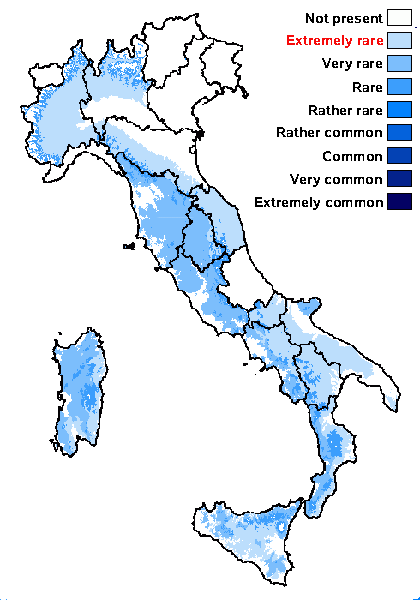
Predictive model
Herbarium samples
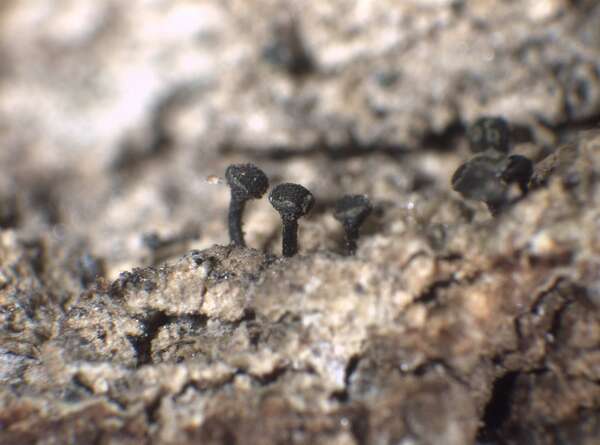

P.L. Nimis; Owner: Department of Life Sciences, University of Trieste
Herbarium: TSB (30836)
2003/03/12
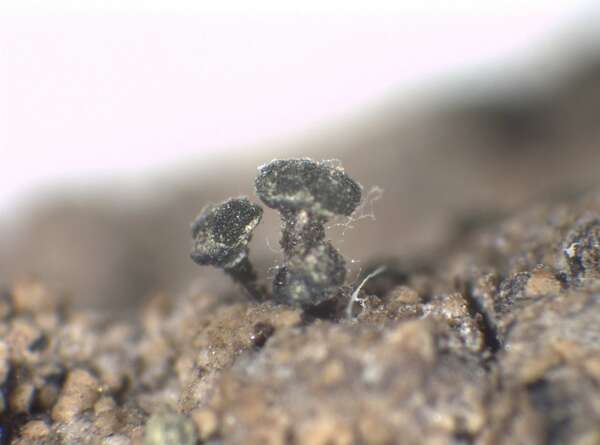

P.L. Nimis; Owner: Department of Life Sciences, University of Trieste
Herbarium: TSB (13662)
2003/03/12
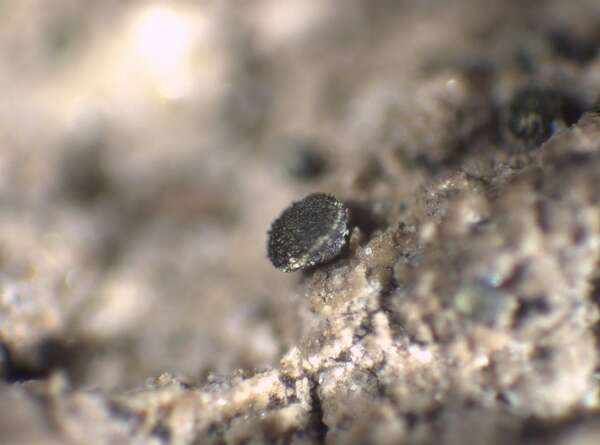

P.L. Nimis; Owner: Department of Life Sciences, University of Trieste
Herbarium: TSB (30836)
2003/03/12
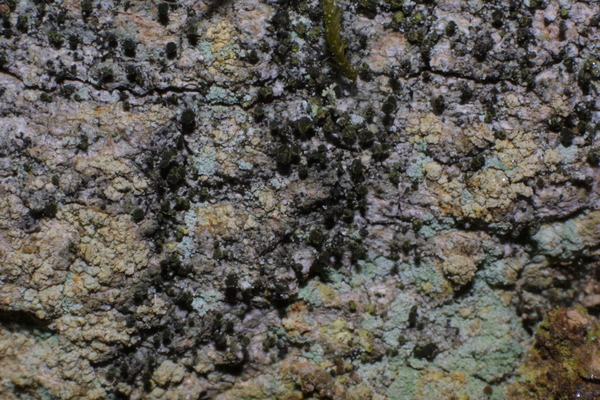

Felix Schumm – CC BY-SA 4.0
[9582], GERMANY, Baden-Württemberg, Stuttgart, zwischen Stuttgart und Leonberg, an Quercus an der Schattenalle beim Bärensee, 48°45.368'N, 9°05.505'E, 430 m
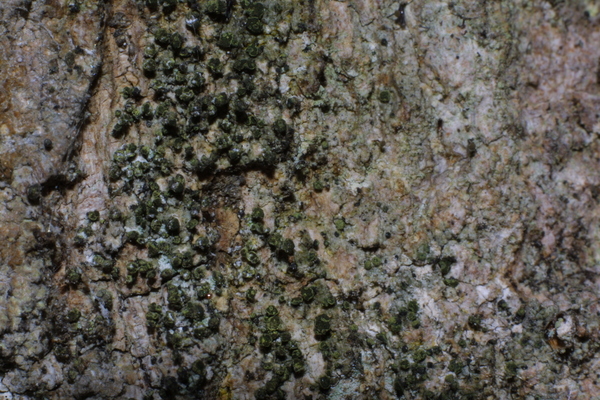

Felix Schumm – CC BY-SA 4.0
[9582], GERMANY, Baden-Württemberg, Stuttgart, zwischen Stuttgart und Leonberg, an Quercus an der Schattenalle beim Bärensee, 48°45.368'N, 9°05.505'E, 430 m
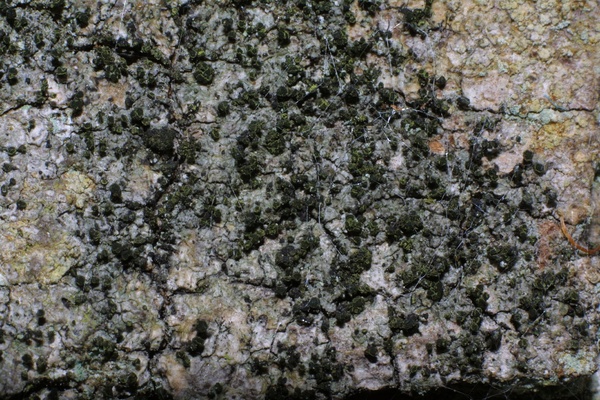

Felix Schumm – CC BY-SA 4.0
[9582], GERMANY, Baden-Württemberg, Stuttgart, zwischen Stuttgart und Leonberg, an Quercus an der Schattenalle beim Bärensee, 48°45.368'N, 9°05.505'E, 430 m
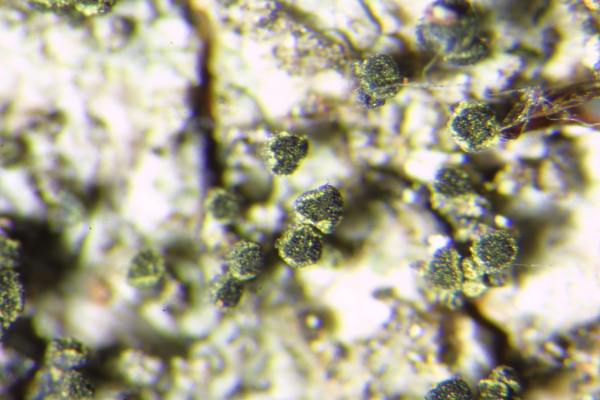

Felix Schumm – CC BY-SA 4.0
[9582], GERMANY, Baden-Württemberg, Stuttgart, zwischen Stuttgart und Leonberg, an Quercus an der Schattenalle beim Bärensee, 48°45.368'N, 9°05.505'E, 430 m
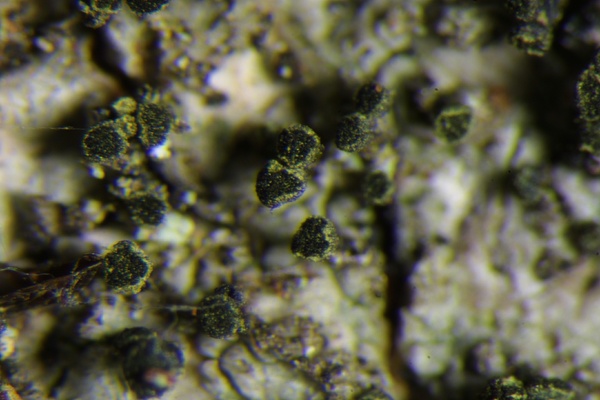

Felix Schumm – CC BY-SA 4.0
[9582], GERMANY, Baden-Württemberg, Stuttgart, zwischen Stuttgart und Leonberg, an Quercus an der Schattenalle beim Bärensee, 48°45.368'N, 9°05.505'E, 430 m
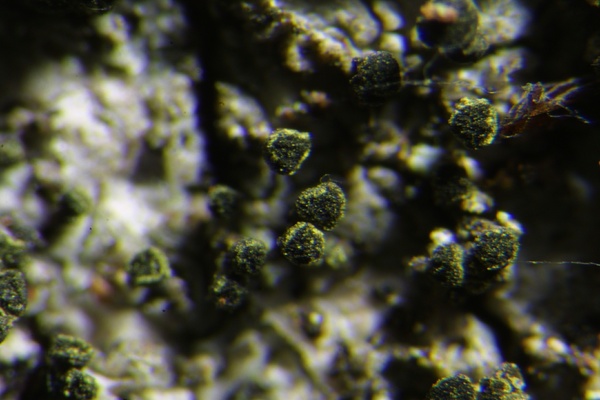

Felix Schumm – CC BY-SA 4.0
[9582], GERMANY, Baden-Württemberg, Stuttgart, zwischen Stuttgart und Leonberg, an Quercus an der Schattenalle beim Bärensee, 48°45.368'N, 9°05.505'E, 430 m
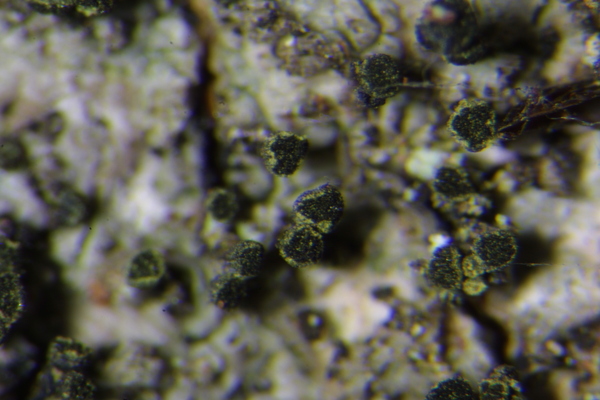

Felix Schumm – CC BY-SA 4.0
[9582], GERMANY, Baden-Württemberg, Stuttgart, zwischen Stuttgart und Leonberg, an Quercus an der Schattenalle beim Bärensee, 48°45.368'N, 9°05.505'E, 430 m
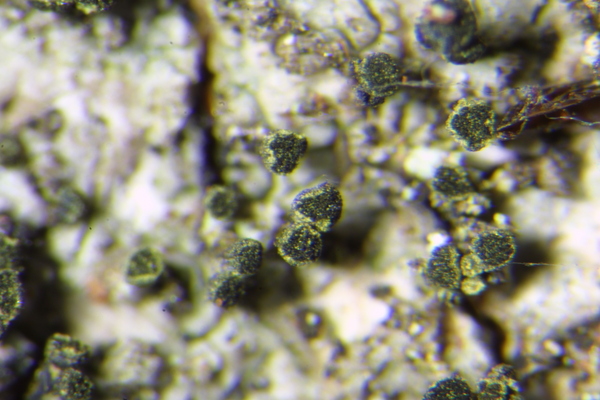

Felix Schumm – CC BY-SA 4.0
[9582], GERMANY, Baden-Württemberg, Stuttgart, zwischen Stuttgart und Leonberg, an Quercus an der Schattenalle beim Bärensee, 48°45.368'N, 9°05.505'E, 430 m
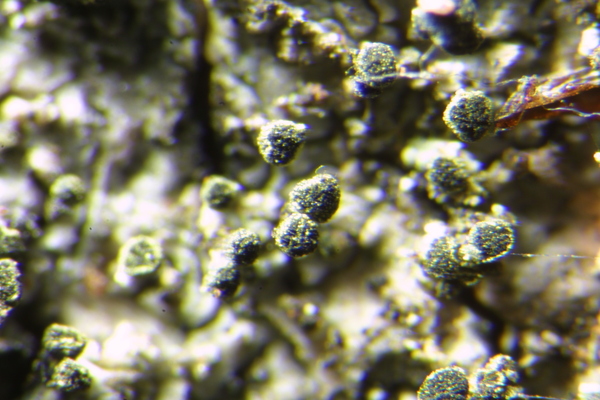

Felix Schumm – CC BY-SA 4.0
[9582], GERMANY, Baden-Württemberg, Stuttgart, zwischen Stuttgart und Leonberg, an Quercus an der Schattenalle beim Bärensee, 48°45.368'N, 9°05.505'E, 430 m


Felix Schumm – CC BY-SA 4.0
[9582], GERMANY, Baden-Württemberg, Stuttgart, zwischen Stuttgart und Leonberg, an Quercus an der Schattenalle beim Bärensee, 48°45.368'N, 9°05.505'E, 430 m
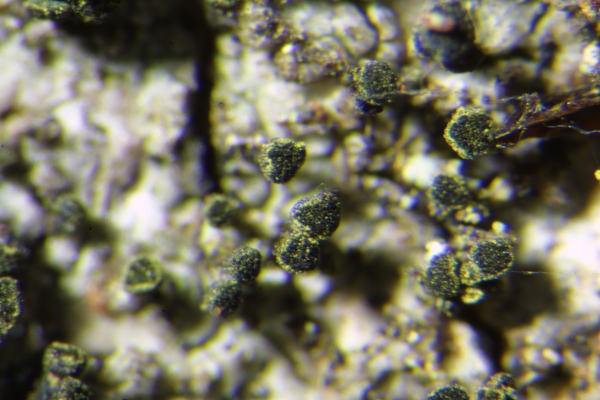

Felix Schumm – CC BY-SA 4.0
[9582], GERMANY, Baden-Württemberg, Stuttgart, zwischen Stuttgart und Leonberg, an Quercus an der Schattenalle beim Bärensee, 48°45.368'N, 9°05.505'E, 430 m
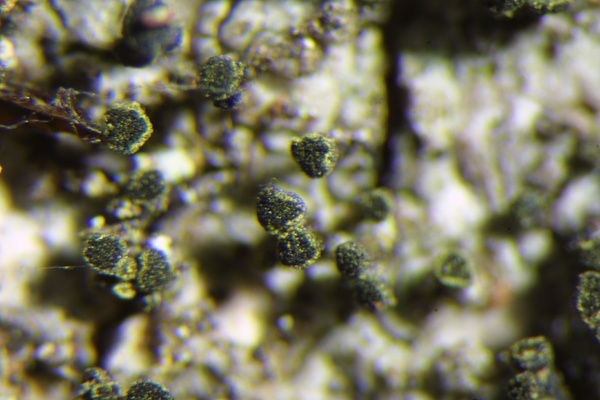

Felix Schumm – CC BY-SA 4.0
[9582], GERMANY, Baden-Württemberg, Stuttgart, zwischen Stuttgart und Leonberg, an Quercus an der Schattenalle beim Bärensee, 48°45.368'N, 9°05.505'E, 430 m
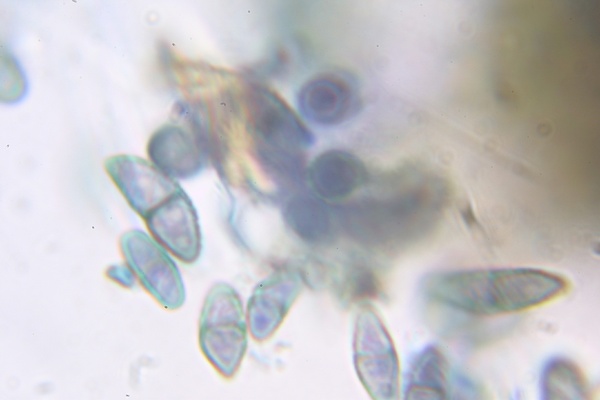

Felix Schumm – CC BY-SA 4.0
[9582], GERMANY, Baden-Württemberg, Stuttgart, zwischen Stuttgart und Leonberg, an Quercus an der Schattenalle beim Bärensee, 48°45.368'N, 9°05.505'E, 430 m
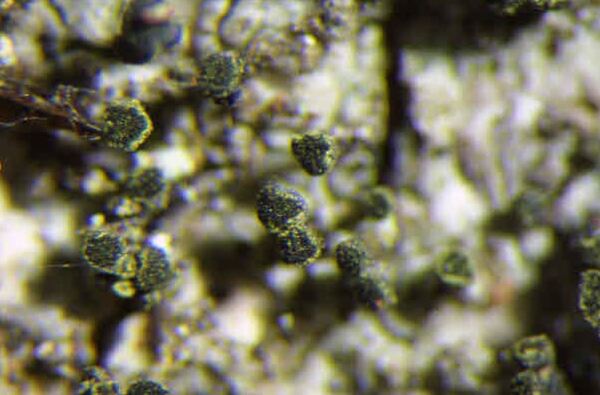

Felix Schumm – CC BY-SA 4.0
[9582], GERMANY, Baden-Württemberg, Stuttgart, zwischen Stuttgart und Leonberg, an Quercus an der Schattenalle beim Bärensee, 48°45.368'N, 9°05.505'E, 430 m
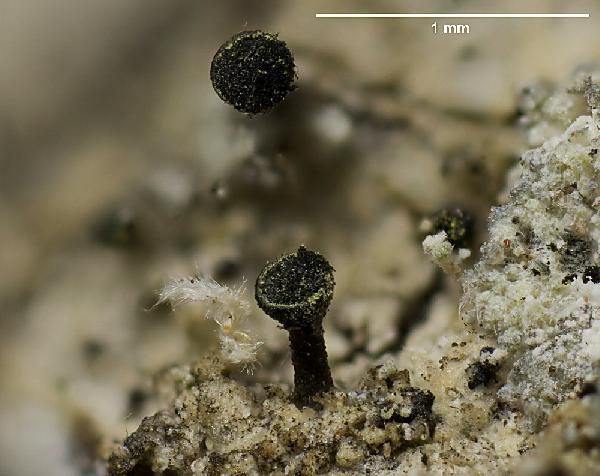
Ulrich Kirschbaum CC BY-SA 4.0 - Source: https://www.thm.de/lse/ulrich-kirschbaum/flechtenbilder
On old Quercus petraea.
Central Europe; Germany: Hesse.
Growth form: Crustose
Substrata: bark
Photobiont: green algae other than Trentepohlia
Reproductive strategy: mainly sexual
In underhangs rarely wetted by rain
Commonnes-rarity: (info)
Alpine belt: absent
Subalpine belt: absent
Oromediterranean belt: absent
Montane belt: rare
Submediterranean belt: extremely rare
Padanian area: absent
Humid submediterranean belt: very rare
Humid mediterranean belt: absent
Dry mediterranean belt: absent

Predictive model
| Herbarium samples |


P.L. Nimis; Owner: Department of Life Sciences, University of Trieste
Herbarium: TSB (30836)
2003/03/12


P.L. Nimis; Owner: Department of Life Sciences, University of Trieste
Herbarium: TSB (13662)
2003/03/12


P.L. Nimis; Owner: Department of Life Sciences, University of Trieste
Herbarium: TSB (30836)
2003/03/12


Felix Schumm – CC BY-SA 4.0
[9582], GERMANY, Baden-Württemberg, Stuttgart, zwischen Stuttgart und Leonberg, an Quercus an der Schattenalle beim Bärensee, 48°45.368'N, 9°05.505'E, 430 m


Felix Schumm – CC BY-SA 4.0
[9582], GERMANY, Baden-Württemberg, Stuttgart, zwischen Stuttgart und Leonberg, an Quercus an der Schattenalle beim Bärensee, 48°45.368'N, 9°05.505'E, 430 m


Felix Schumm – CC BY-SA 4.0
[9582], GERMANY, Baden-Württemberg, Stuttgart, zwischen Stuttgart und Leonberg, an Quercus an der Schattenalle beim Bärensee, 48°45.368'N, 9°05.505'E, 430 m


Felix Schumm – CC BY-SA 4.0
[9582], GERMANY, Baden-Württemberg, Stuttgart, zwischen Stuttgart und Leonberg, an Quercus an der Schattenalle beim Bärensee, 48°45.368'N, 9°05.505'E, 430 m


Felix Schumm – CC BY-SA 4.0
[9582], GERMANY, Baden-Württemberg, Stuttgart, zwischen Stuttgart und Leonberg, an Quercus an der Schattenalle beim Bärensee, 48°45.368'N, 9°05.505'E, 430 m


Felix Schumm – CC BY-SA 4.0
[9582], GERMANY, Baden-Württemberg, Stuttgart, zwischen Stuttgart und Leonberg, an Quercus an der Schattenalle beim Bärensee, 48°45.368'N, 9°05.505'E, 430 m


Felix Schumm – CC BY-SA 4.0
[9582], GERMANY, Baden-Württemberg, Stuttgart, zwischen Stuttgart und Leonberg, an Quercus an der Schattenalle beim Bärensee, 48°45.368'N, 9°05.505'E, 430 m


Felix Schumm – CC BY-SA 4.0
[9582], GERMANY, Baden-Württemberg, Stuttgart, zwischen Stuttgart und Leonberg, an Quercus an der Schattenalle beim Bärensee, 48°45.368'N, 9°05.505'E, 430 m


Felix Schumm – CC BY-SA 4.0
[9582], GERMANY, Baden-Württemberg, Stuttgart, zwischen Stuttgart und Leonberg, an Quercus an der Schattenalle beim Bärensee, 48°45.368'N, 9°05.505'E, 430 m


Felix Schumm – CC BY-SA 4.0
[9582], GERMANY, Baden-Württemberg, Stuttgart, zwischen Stuttgart und Leonberg, an Quercus an der Schattenalle beim Bärensee, 48°45.368'N, 9°05.505'E, 430 m


Felix Schumm – CC BY-SA 4.0
[9582], GERMANY, Baden-Württemberg, Stuttgart, zwischen Stuttgart und Leonberg, an Quercus an der Schattenalle beim Bärensee, 48°45.368'N, 9°05.505'E, 430 m


Felix Schumm – CC BY-SA 4.0
[9582], GERMANY, Baden-Württemberg, Stuttgart, zwischen Stuttgart und Leonberg, an Quercus an der Schattenalle beim Bärensee, 48°45.368'N, 9°05.505'E, 430 m


Felix Schumm – CC BY-SA 4.0
[9582], GERMANY, Baden-Württemberg, Stuttgart, zwischen Stuttgart und Leonberg, an Quercus an der Schattenalle beim Bärensee, 48°45.368'N, 9°05.505'E, 430 m


Felix Schumm – CC BY-SA 4.0
[9582], GERMANY, Baden-Württemberg, Stuttgart, zwischen Stuttgart und Leonberg, an Quercus an der Schattenalle beim Bärensee, 48°45.368'N, 9°05.505'E, 430 m

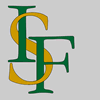 Index Fungorum
Index Fungorum
 GBIF
GBIF
